This afternoon I decided to go to Sanmenli Village (三门里村) to find the oldest Diaolou in Kaiping, the Yinglonglou (迎龙楼).
This is the route that my offline maps app suggested earlier today:
When you see such a route, isn’t this the route you’d much rather take?
I decided to try this shortcut. I mean, when Nana takes me through small roads, we always find our way out. How hard can it be, just scurrying across the rice paddies and villages? About ten minutes into this shortcut that I imagine to exist, I came across a northerner farmer who warned me that there’s nothing ahead of me besides his fish ponds. I decided that I should follow the saying that some martial artists said in Wong Kar Wai movies: “It is better to advance than to stop.”
Well, when you insist on advancing on non-roads, you get this:
Grass! Fish on your left, ducks on your right! My maps app had long stopped locating me at this point. In the end, I’m not sure how much longer I took to get to Sanmenli, but I think it was way longer than if I had just gone by the big roads that made that big damned circle.
It was so hot! My gray Center for Learning in Action t-shirt had big dark spots. All the trucks that drove by kicked up huge clouds of dirt and dust flew into my eyes. I was so tired, too! My legs were wobbly, and I was weakly keeping on. I kept thinking, “MY GOD, I’m not even halfway there. How in the world am I making it back?” It’s too bad that buses in China don’t have that bike clamp thingy that the buses in America have in the front.
This was the route I probably ended up taking:
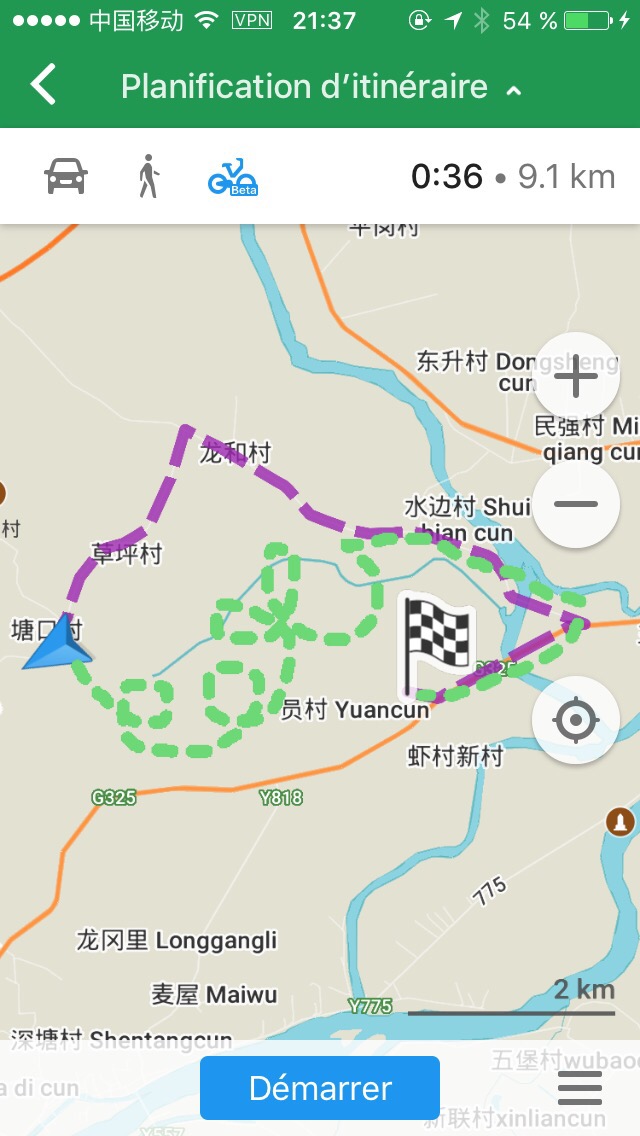
I had to take a break at this tiny gas station that had refreshments and stuff, but I didn’t buy anything, I just sat on their chairs outside and I drank my water and watched their birds caged under a banyan tree. There are a lot of banyan trees. Shionyi, one of the interns who recently came (maybe a couple weeks before I arrived) to the Cangdong Project, was the one who taught me that villagers place a good banyan tree at the entrance of their village as a feng shui principle. “As the banyan tree has deep roots and flourishes widely, so the village also will last and grow with many children.” The Chinese version is actually pretty different, but ehhh I can’t remember the exact lines, and this translation is the basic essence!
There’s a lot of trash in China. It’s hard to look at. It made me really depressed the first two days. When my uncle drove me from Guangzhou to Kaiping, and he tossed my grass jelly cup in a bush on the road, I was appalled. But he said, “It’s a trash can! I saw a lot of trash there.”
It was Rocky who explained to me that it’s just different. Most children here aren’t used to being raised to live sustainably by the margins like children in the west might be. But damn, there is a lot of trash everywhere. I wonder what westerners feel when they come and find this zen countryside spilling over with trash everywhere? Every picturesque fish pond banked by woods of bamboo has some floating garbage… In fact that fish pond in Cangdong is outright being used as a trash can / organic waste basket. Professor Tan says that the villagers are throwing their trash in the fish pond because the trash collectors stopped collecting trash from Liyuan (which is just across the way from Cangdong Village) and they’re throwing trash in their fish pond as a form of protest… How are the fish holding up with all this trash, anyway?
Anyways, I finally arrived at Sanmenli after asking many people for directions.
It’s a nice village.
They have this bright sign here. On the left, it says “Cultural Heritage Day 2016 Main Theme– ‘Let cultural heritage harmonise with life today.” On the right, it’s a two-line rhyme that says, “Cultural Heritage is a priceless treasure, You and I need to protect it.” I guess that I can find Yinglonglou if I enter between these two banners. And I did! I asked some people hanging out in the alleyway, enjoying the shade, and they were kind to say it’s just further down. I creeped in together with my bicycle…
Voila!
I feel like I remember it to be paler in pictures. At the top of the Yinglonglou they have the normal Chinese “qing zhuan,” (青砖) or “pale/blue-green/grey bricks,” ugh, I’m not sure how to translate it, I’m sure there’s a technical translation for this material.
And then the rest of the building is made of these red bricks. The bright red bricks surprised me a bit, reminding me of when I finally saw the Coliseum. Contrary to the brown or stone-y colours I saw in pictures, I thought the Coliseum looked blood red. I always pray that the real thing looks different from pictures. Because otherwise why the hell should I have togo all the way to the real thing when it just looks the same as the pictures?
I mean, I know, red bricks are not exactly GROUNDBREAKING, I know, I know. But I thought that everyone around here used the qing bricks.
A granny was selling dried fruit snacks at the entrance. There were three little stands like this. It’s about 16:40-17:00 at this point, so I guessed that everyone was wrapping up business. The granny told me that the Yinglonglou isn’t open for guests except for the spring festival, which passed already. She said that they haven’t finished cleaning it up yet.
She explained that she’s been living in Sanmenli for many, many years. She said that whenever there were storms or bandits, the ancestors of the village would all take refuge in the diaolou.
I had wanted to ask her about the process in which they made Sanmenli into a tourist location. But she turned the questions on me and asked me where I was from and stuff, but she kept reasking things I answered already… She insisted on selling me dried fruit, and even giving me free dried fruit but I didn’t take any. I continued my way and looked around the outside.
Those gun holes are so small! Well, the mass of this Diaolou makes them look extra small. There must be like NO light… The granny had said that the walls are a meter thick! I am not sure about that. I’m gonna have to ask Professor Tan if she knows, when she comes back.

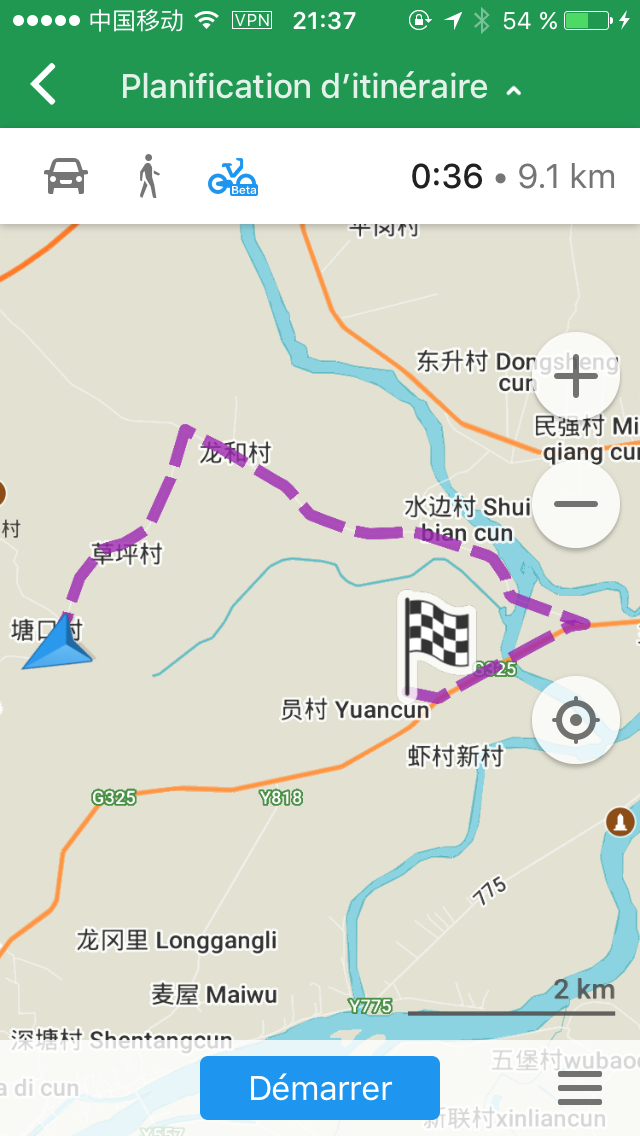
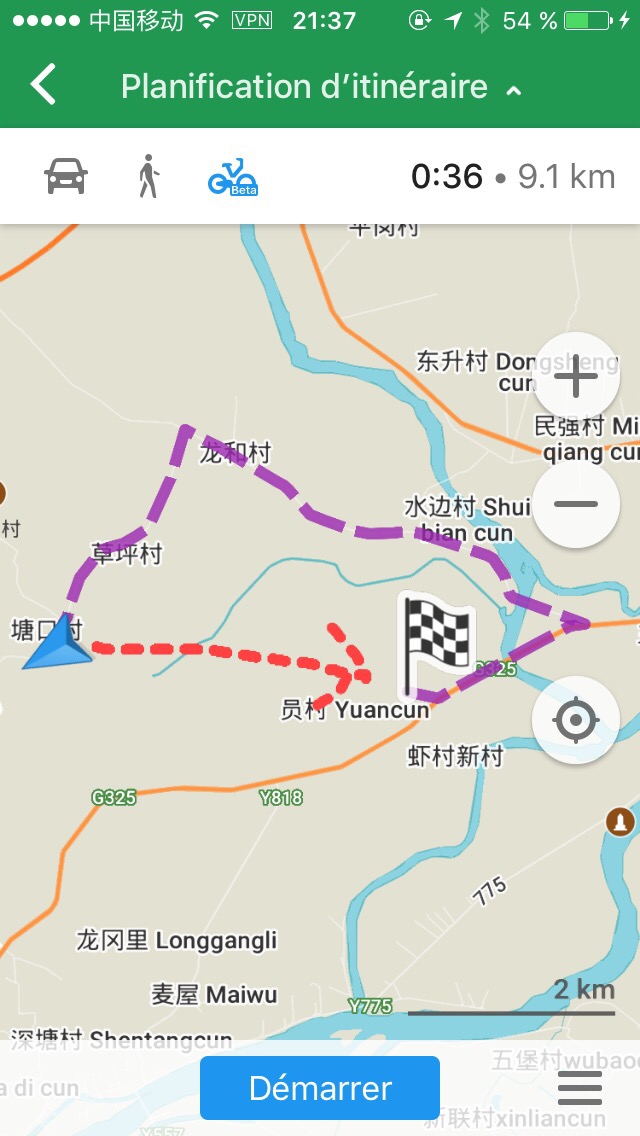
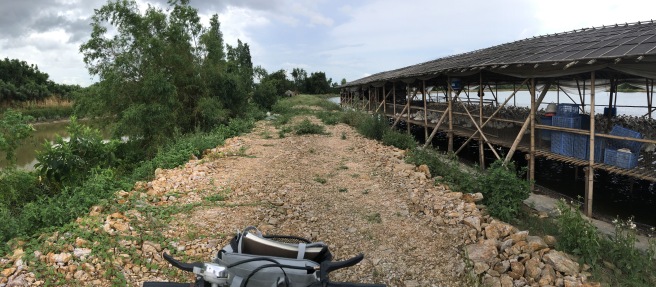
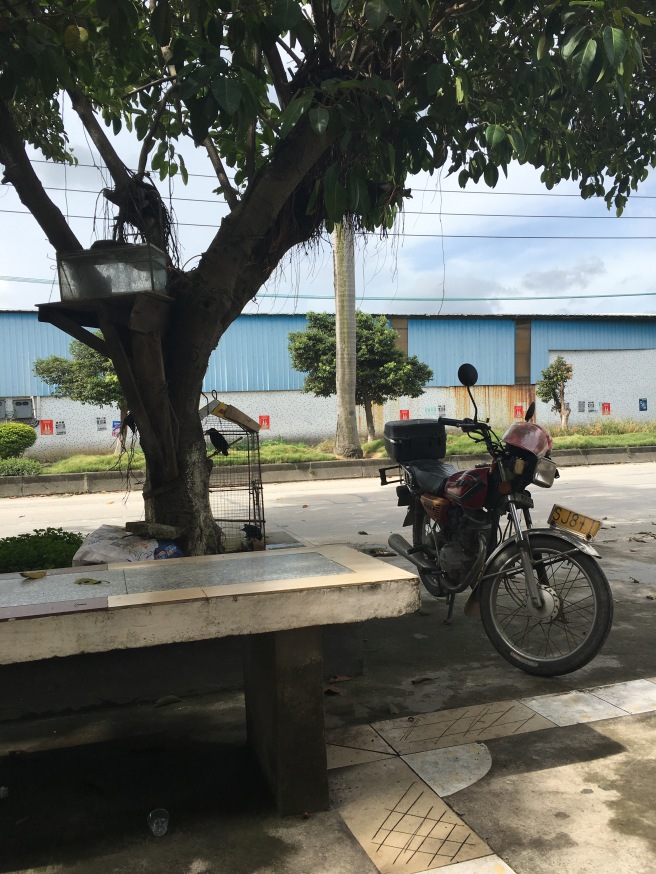
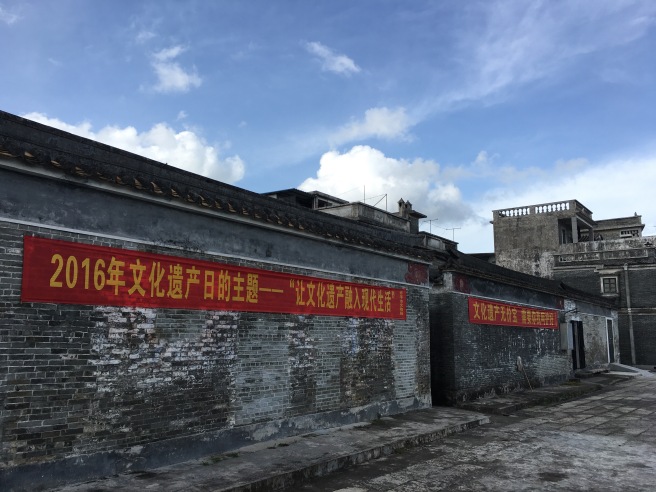
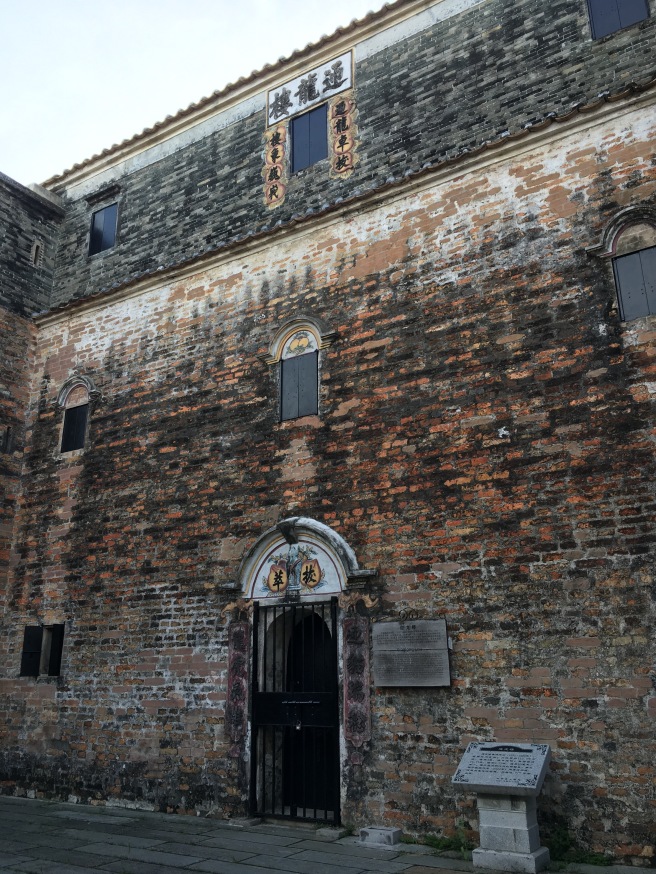

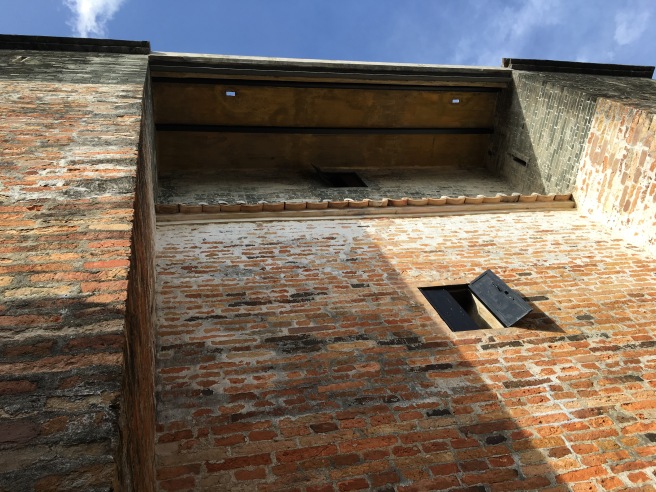
Apparently, the red bricks are ming dynasty bricks, predating the qing dynasty so they’re special because they are the original floors of the tower o_o;; the qing dynasty the third floor was a later addition that’s why it’s not red.
LikeLike